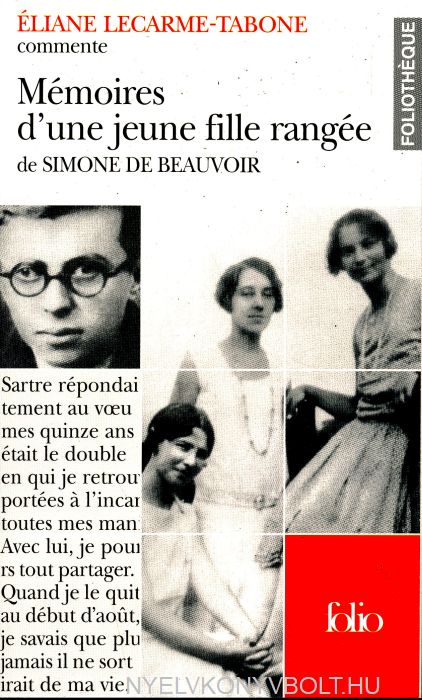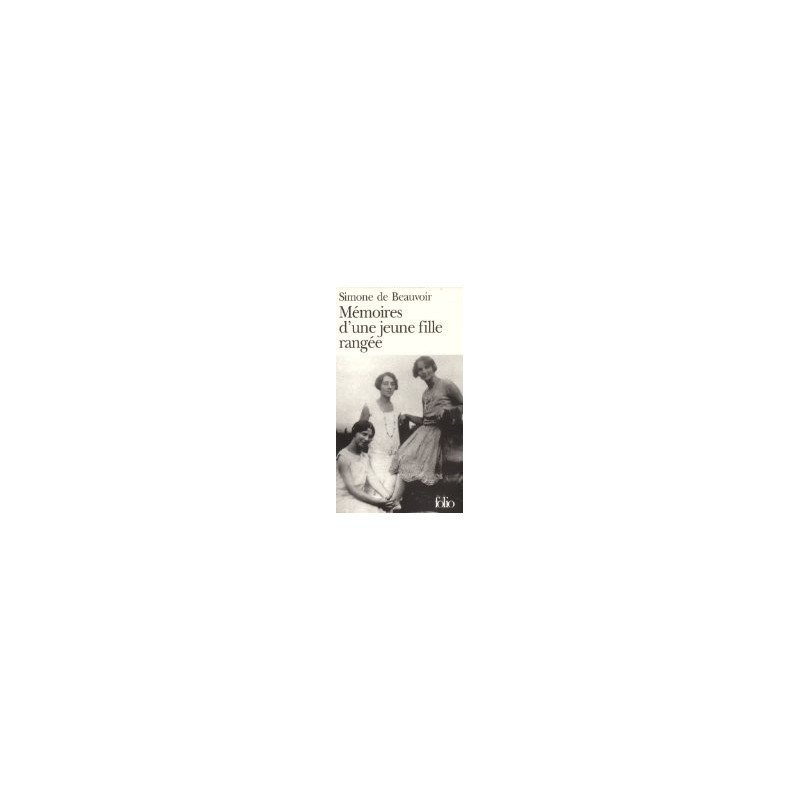
Another thread that is first woven into the narrative very early is the dread inherent in the realization that we change with time, that our present incarnation is different than the person we will be in the future, and in ways currently dismaying or frightening to us.

There comes a period in her teenage years when language, the necessity of interpreting language, becomes her enemy for just this reason: when we express our thoughts, feelings, and intentions, there is always a chasm between the thing itself-our interior landscape-and our expression of it often this chasm is only widened when our words are interpreted by another person.ĭespite this semiotic difficulty, however, de Beauvoir herself does an impeccable job of articulating her own interior landscapes at different times in her life, not only as personal experiences, but as ontological states capable of dissection by her as an adult. One of the many threads running through the book traces de Beauvoir's evolving understanding of signs: where they come from, how they work, and the inescapable gap (despite her early naïvete) between the thing itself and the sign humans have invented to indicate it. I saw in the picture the exact double of the sound corresponding to it: they emanated together from the thing they expressed, so well that the relation between them involved nothing arbitrary. It then took me very little time to learn to read. , and the two letters, c and h, that together were pronounced "ch." I understood suddenly that they had no name in the sense that objects do, but that they represented a sound: I understood what a sign is. Je voyais dans l'image graphique l'exacte doublure du son qui lui correspondait: ils émanaient ensemble de la chose qu'ils exprimaient si bien que leur relation ne comportait aucun arbitraire.

J'ai compris soudain qu'elles ne possedaient pas un nom à la manière des objets, mais qu'elles représentaient un son: j'ai compris ce que c'est un signe. In this passage, she recalls the "click" in her brain when she finally, although in a limited way, grasped the concept of a sign: e contemplais l'image d'une vache, et les deux lettres, c, h, qui se prononçaient ch. In this mindset she could understand letters as objects (an "a," for example) but not as building blocks representing sounds that make up words. She writes, for example, about her early assumption (age five or so) that language and other signs sprang organically- necessarily and without human intervention-from the things they signify, so that the word "vache" (cow) was somehow a necessary and organic component of the animal itself.

She is such a keen observer, and obviously so well-accustomed to dissecting the way humans perceive and process the world, that hers becomes an early-childhood story unlike any I've ever read before-and it's especially exciting to read about her development in this regard if the reader has some slight familiarity with her existentialist feminism later in life, since she does a complete about-face on many issues. Beginning with birth and ending with the completion of her secondary schooling, some of the most interesting passages in this book map to what are often the "boring bits" of biography and autobiography: de Beauvoir's early childhood. So there may be a certain lack of critical distance in this post: I'm declaring myself right up front to be a newly-converted de Beauvoir fangirl, and my only dilemma now is whether to break my book-buying ban and order the second volume ( La force de l'age) right this second, or whether to hold out for a gift-giving holiday or upcoming trip to France.Īnd the long: For me, one of the greatest pleasures of Mémoires d'une jeune fille rangée is simply watching de Beauvoir's brain apply its lifelong training in philosophy and semiotics to the examination of her own early life. It's been a long time since I connected with a book at such a level of visceral sympathy-since I had the feeling "Yes! That's what it's like for me too!," since I felt such a sense of loss upon turning a final page. The short of it: From the opening pages I fell head over heels for Mémoires d'une jeune fille rangée (translated into English as Memoirs of a Dutiful Daughter but more literally "Memoirs of a well-behaved girl"), the first of four volumes in de Beauvoir's autobiography.


 0 kommentar(er)
0 kommentar(er)
